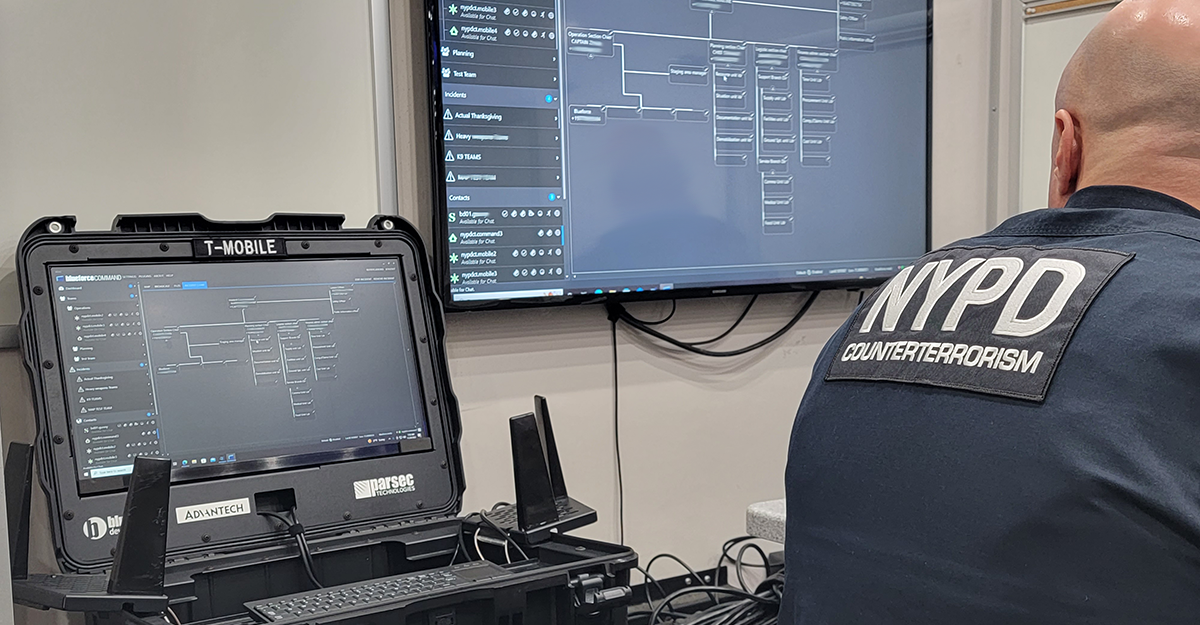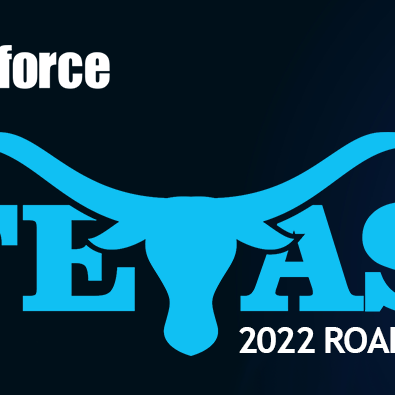
A Most Exceptional Macy’s Thanksgiving Parade in NYC
After Action Reports (AAR) may be one of the most important tools in emergency management and counter-terrorism operations. When used as a critical component of an agency’s tactics, techniques, and procedures (TTP), AAR’s can be an important litmus test which questions our assumptions about threats, which ultimately impacts training, mitigation, and response. Blueforce was used extensively over the entire Macys Thanksgiving Day parade route and even the NYPD Tactical Operations Center (TOC) on the parade route in New York City, and we took notes per what worked well, and where we can improve. For the purposes of this blog post, we will not share detailed specifics per what worked and what didn’t as it can imperil operational security (OPSEC), but also personnel security (PERSEC).
Blueforce’s relationship with the New York Police Department (NYPD) goes back six years when LT John Pappas, the visionary leader of NYPD’s Transit K9 program, came up with the idea of what is now called the NYPD TREDD Program. LT Pappas designed a capability where BlueforceTACTICAL on an Android device, attached to offleash K9’s as part of their harness system, would fuse subterranean location, gamma radiological, homemade explosive (HME) gases, K9 physiological response, and behavioral response (is the dog sitting, standing, lunging, etc) and would alert handlers, commanders, and dispatchers alike when sensor markers and anomalous behaviors were detected. This program evolves daily and uses Blueforce’s encrypted messages to update department and inter-agency partners.
Fast forward to October 2022 when we announced BlueforceMOBILE Command Kit. The Command Kit provides an edge capability that considers full Command processes in a partially or totally denied environment (terrestrial) which can then be connected to a variety of partner products to include partner communications kits and even portable satellite networks provided by T-Mobile. Let’s decompose some of the requirements that went into the design of the Mobile Command Kit:
- Forward Edge Compute: No one can claim 100% operational communications as the event will always dictate the impact on local comms and backhaul. Hence, forward edge command must be able to leverage local compute for conducting operations when terrestrial circuits become congested, denied, or fail completely. Edge compute ensures the response can continue as planned should the web and/or access to cloud environments become unavailable. Furthermore, edge compute allows artificial intelligence recognitional algorithms to run at the scene, minimizing the need to send massive amounts of data to the cloud which can also introduce latency where seconds really do matter.
- When terrestrial fails, Tactical Commanders must be able to leverage local communications (i.e., tactical CBRS, MANET, WIFI mesh) that can move TCP/IP traffic, but augment with space-based backhaul (i.e., BGAN/LBAND, Ku/Ka, C-Band, StarLink, etc.) for wide area communications.
- A means to allow non-Blueforce endpoints to be rapidly embraced in the Command Equation: More on this in the coming weeks, but Blueforce users can leverage the power of our self-synchronization and swarming capabilities, but what about users that do not have Blueforce in their stable of tools today? Blueforce field tested a new capability that allows non-Blueforce users to “checkin” with Incident Command and receive notifications, alerts, and task orders using SMS or other telco-specific comms protocols. Commanders don’t need to think about “who is who” on the scene and how they can consume information: Blueforce recognizes, and routes data and information based on the capabilities of each endpoint. It worked flawlessly in New York and offers an alternative to vendors who claim, “it is interoperable as long as the agency uses our tech” (and you know who you are).
- Eliminating Silos of Information and IoT Data: We have seen it a million times. Silos of information cause the decision maker to flip between 20 or more Windows apps or web pages to make sense of what is going on at a complex event. Even then, the decision maker must “connect the dots” between the wide array of siloed systems causing latency in the decision process and even missing opportunities for action in severely time constrained decision environments. At the Macy’s Day parade, we demonstrated new data types on our Single Pane of Glass Dashboards by building bi-directional movement of incident data, threat streams, and 911 calls by building rich, bi-directional information sharing with Haystax. We will share more on Haystax integration in the coming weeks.
The above merely covers the technical requirements and features for Forward Edge Command. If you ask Boston PD, SFO PD, NYPD and/or others, the absolute crush of citizens on the route does indeed impact available bandwidth. Because Blueforce rides just above the TCP/IP layer, we rely on data interoperability standards, encryption, and compression to move information between disparate agency and responder agency systems at high speeds. Blueforce can move highly perishable tactical decision data in payloads that measure less than 1200 bytes per update (most message sizes are between 600 bytes and 900 bytes per update).  So, what did Blueforce learn on Thanksgiving Day (Blueforce, and not attributed to New York):
- The T-Mobile 5G network is stunning. With hundreds of thousands of people on the parade route, we experienced 600Mbps down and 50Mbps uploads at less than 90ms jitter on the T-Mobile for Government network. The other carriers were not even close. Verizon timed out on simple TCP/IP requests at the height of the parade. T-Mobiles pipes persisted all day with no deviation and BAND71 in particular, was seriously impressive.
- Scale: The Blueforce protocol scales to 100’s of millions of endpoints. While Macys Day Parade did not introduce that level of scale, the complex mesh of people, sensors, and information services plus the hundreds of data elements presented by the event introduced ZERO degradation (i.e., human, sensor, OR information service).
- Interop: Events like the Macys Thanksgiving Parade present the PERFECT mashup of non-predictive entities. What became critical was the need for multiple alerting and communications pathways with recognitional support for access control and more. The new (and soon to be announced) Incident Command Plugin with its native support for multimodel communications, alerting, and notifications was adaptive to available comms paths and failed over successfully between Blueforce in-band protocols and SMS/MMS/SMTP out of band.
- Human Recognition: What surprised us most was responder response to a variety of alerting modalities. More work needs to be done that allows recognitional support per incident responders per severity of alerts, but the basics that were built such as PAR Checks, EVAC, and even SOS/duress worked flawlessly and delivered TIMELY alerting to urgent communications from the Incident Commander. We also tested new capabilities per haptic, audible, and even flashing light on mobile and wearable devices which quickly raised awareness autonomously of proximate threats. For sure, many of these alerting mechanisms have operational considerations, but the ability for the CT agent to turn these on or off worked flawlessly as well.
- Adaptive ICS: No events, EVER, have presented the same operational response. As such, chaos must be embraced which requires dynamic adaptation as an incident evolves. We learned a LOT about ease of adaptation and extensibility and are returning to Boston with a list of rich enhancements that enables Commanders to quickly morph their ICS charting and more. More on these after January 1.
Tomorrow, we will include coverage of Emergency Management Micro-Services which will share CONOPS per how agencies are using Blueforce for a variety of incident management micro services. We are ready to discuss live you should wish to connect: Send an email to info@blueforcedev.com or call us at +1 866-960-0204.


